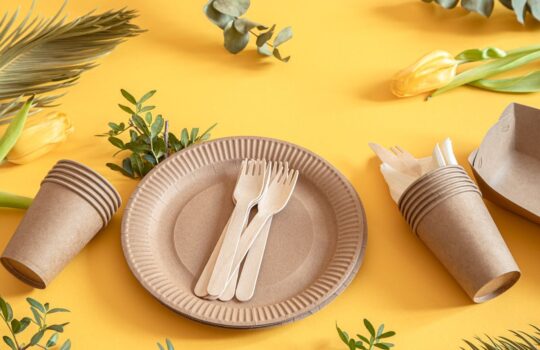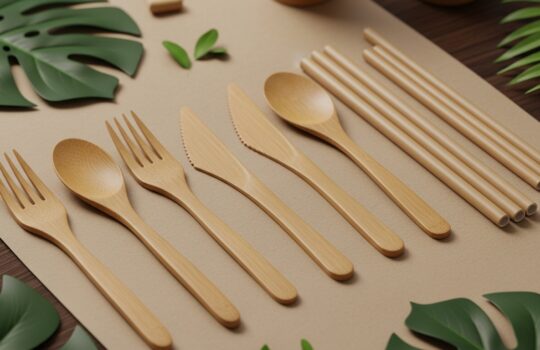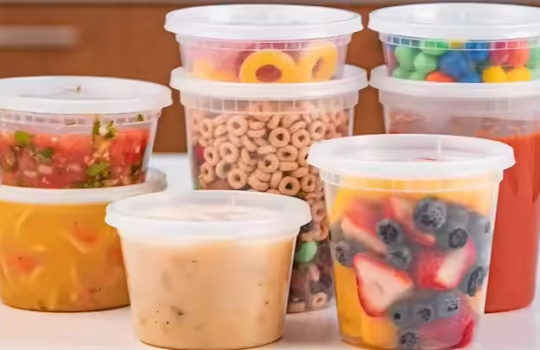In any kitchen, food safety and hygiene are non-negotiable. While washing your hands is crucial, the right pair of gloves adds an essential layer of protection for you and those you’re cooking for. Choosing the best gloves for food preparation, however, involves more than just grabbing the first box you see. This guide will walk you through the key factors to consider, including material, fit, and durability, so you can confidently select the perfect gloves to ensure safe and sanitary food handling.
Choosing the Best Gloves for Food Preparation: Important Tips
Here are a few essential tips to consider when buying the best gloves for food preparation for your restaurant, hotel, or household:
Material of a Glove:
The most crucial aspect to consider is the material of the glove. Certain materials are well-suited for particular tasks and offer distinct advantages. Vinyl, nitrile, and latex are the three most popular varieties of food-safe gloves.
Nitrile Gloves
For both home and commercial kitchens, nitrile gloves are a convenient and long-lasting option. Since they are composed of a synthetic rubber substance, they serve as an excellent alternative for individuals who are allergic to natural rubber, such as those with latex allergies. Gloves made of nitrile are highly resistant to tearing, puncturing, and a variety of chemicals, including fats and oils.
You can confidently handle knives and other kitchen tools with the snug fit of these gloves, which offer exceptional dexterity and tactile sensitivity. Although they cost more than vinyl gloves, they are a dependable choice for almost any food preparation task, including handling raw meat and chopping vegetables, due to their exceptional strength and durability.
Vinyl Gloves
For food preparation, vinyl gloves are a common and affordable choice. They are ideal for short-term, low-risk tasks because they are made of PVC (polyvinyl chloride). Simple food handling tasks, such as assembling sandwiches or dividing salads, are among them. Because vinyl gloves usually fit more loosely, they can be put on and taken off more easily.
They are more easily torn or punctured than other options, though, and are less resilient. Additionally, because the oils can degrade the PVC material, they are not the best for handling fatty or oily foods and provide only a limited level of chemical protection.
Latex Gloves
Due to their exceptional comfort, flexibility, and snug fit—often referred to as a “second skin”—latex gloves were once the standard in many kitchens. For delicate tasks, this offers unparalleled dexterity. They are a more environmentally friendly option because they are also biodegradable.
However, the possibility of allergic reactions is the main disadvantage of latex gloves. Latex allergies can have a severe impact on both the wearer and those who come into contact with the food. Many food service establishments have switched from latex to nitrile or vinyl substitutes because of this risk. They remain an excellent choice if you are certain that no one in your surroundings has a latex allergy.
Snug Fit and Comfort
In addition to being uncomfortable, a poorly fitting glove may pose a safety risk. While too-tight gloves can limit movement and tear easily, too-loose gloves can slip off or get caught in equipment. A good fit guarantees that you can work safely and effectively.
Choose gloves that fit comfortably without being too tight. For optimal dexterity, your fingers should be able to reach the tips of the gloves without encountering any extra material. Because sizing can vary, it’s a good idea to try different sizes and consider other brands as well. A properly fitting glove enhances your overall performance in the kitchen and lessens hand fatigue during extended prep sessions.
Durability and Task Suitability
Think about how demanding the work you will be doing will be. A less sturdy glove, such as vinyl, might be adequate for light-duty tasks like plating desserts or garnishing dishes. Particularly in high-volume settings where regular glove changes are necessary, this helps manage costs.
You need a glove that can withstand the pressure for more demanding tasks, such as deboning chicken, handling shellfish with sharp edges, or vigorous mixing. When it comes to heavy-duty tasks, nitrile gloves are the obvious choice. Their high level of puncture resistance keeps your hands safe and stops food contamination from glove fragments. To ensure the highest levels of safety and hygienic practices, always match the glove’s strength to the task at hand.
Food-Safe Types:
There are two types of food-safe gloves: powdered and powder-free. Cornstarch is used to lightly dust powdered gloves, making them easier to put on, particularly if your hands are wet. However, because of the possibility of allergic reactions or surface contamination, health authorities have prohibited the use of most powdered gloves for medical purposes.
Gloves without powder are the best option when preparing food. They remove the possibility that powder residue will contaminate food, alter flavor, or cause allergies. The polymer lining of many contemporary powder-free gloves makes them nearly as simple to put on as their powdered equivalents.
Find the Right Gloves for Your Restaurants, Hotels, or Hospitality Groups: Only at Planetize Packaging
One of the most crucial steps in maintaining a clean and safe kitchen is selecting the right gloves for food preparation. You can guard against harm and stop the spread of foodborne illnesses by carefully evaluating the material, fit, and durability. There is a glove for every purpose, ranging from affordable vinyl for light work to sturdy nitrile for demanding jobs. Purchasing the right hand protection increases productivity and confidence in all your culinary endeavors while also demonstrating a commitment to safety.
At Planetize Packaging, we recognize the importance of safety and quality in the hospitality sector. We offer a wide range of premium food-grade gloves designed to meet the exacting requirements of commercial kitchens. We have the ideal solutions to keep your employees safe and ensure your operations are in compliance, whether you manage a restaurant, hotel, or a large hospitality group.
We offer premium gloves in every size, carefully selected from our inventory. To ensure that every product we sell meets stringent safety and durability standards, we partner with reputable manufacturers that share our commitment to quality and excellence. From front-of-house service to back-of-house preparation, our team of professionals is prepared to assist you in determining your needs and suggesting the most affordable and suitable solutions for your specific applications. For dependable supplies and peace of mind, pick Planetize custom packaging as your go-to partner for packaging supplies.
Frequently Asked Questions:
When preparing food, how frequently should I change my gloves?
Every time you switch tasks, particularly when handling raw food and then ready-to-eat items, you should change your gloves. Additionally, they must be replaced after four hours of nonstop use on a single task or if they become contaminated or torn.
Are disposable food prep gloves reusable?
Disposable gloves should never be cleaned or reused. They are designed for single-use. Washing them may result in tiny tears that harbor bacteria, rendering them unfit for use and raising the possibility of cross-contamination.
When handling raw meat, what kind of glove is ideal?
When handling raw meat, nitrile gloves are the ideal option. They offer a superior barrier against bacteria and are incredibly resilient and puncture-resistant. Good dexterity when handling knives or other tools is also made possible by their snug fit.






